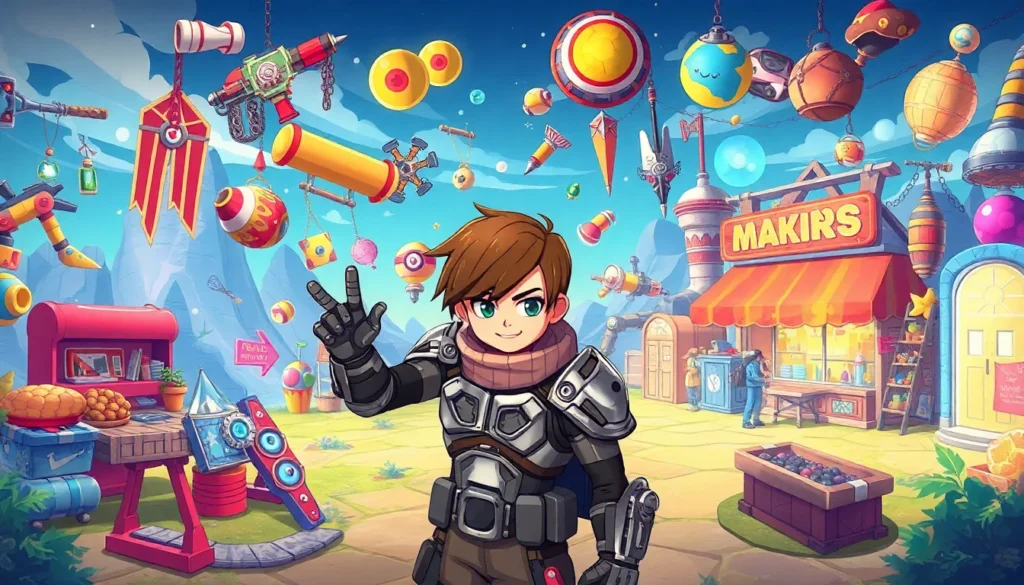In the vast universe of RPGs, storylines are the lifeblood that keeps players glued to their screens. Imagine embarking on a quest where every choice you make could lead to glory or disaster—it’s like being the star of your own epic movie, but without the awkward red carpet moments. Whether it’s slaying dragons or negotiating peace treaties between rival factions, the narrative twists and turns are what make every game a unique adventure.
Table of Contents
ToggleOverview of RPG Storylines
RPG storylines play a crucial role in player engagement. They provide a structured narrative that players can shape through choices. Engaging plots often lead to unique adventures and memorable experiences. Multiple paths often exist, reflecting decisions made throughout the game.
Character development remains a significant component of storytelling. Players invest in characters through their journeys, connecting emotionally with their growth and challenges. Intrigued players often explore complex relationships, which enhance narrative depth.
Conflict serves as a driving force in RPG narratives. Whether through battles or moral dilemmas, these tensions propel the story forward. Players frequently encounter antagonists with distinct motives, adding layers to the journey.
World-building also shapes RPG storylines. Developers create rich settings filled with lore, history, and cultures. Immersive environments allow for discovery and exploration, making the gameplay experience dynamic. Each location contributes to the overarching narrative and player experience.
Ultimately, effective RPG storylines offer players agency. By allowing choices to influence outcomes, they create a sense of ownership over the narrative. This freedom often leads to replayability, as players seek to discover different endings. Through these elements, RPGs craft compelling stories that resonate long after the game ends.
Key Elements of Engaging RPG Storylines

Engaging RPG storylines rely on several key elements that enhance player involvement and satisfaction. Two critical components include character development and conflict resolution.
Character Development
Character growth remains fundamental in RPGs. Players connect emotionally with characters, experiencing their evolution through various challenges. Unique backstories deepen this connection, giving players a reason to invest in their journeys. Rich character arcs often lead to unexpected twists, making decisions more impactful. Furthermore, relationships among characters introduce dynamics that enhance storytelling. Players often find themselves facing choices that significantly affect their characters’ paths, reinforcing the importance of character development in creating memorable experiences.
Conflict and Resolution
Conflict drives the narrative in RPGs, presenting challenges that players must overcome. Battles against formidable foes offer thrilling moments, while moral dilemmas encourage deeper reflection. Various forms of conflict—internal and external—keep players engaged and motivated. The resolution of these conflicts often leads to meaningful consequences, shaping the game’s world and its characters. Moreover, effective resolution provides closure, allowing players to reflect on their choices and experiences. Each conflict serves as a catalyst for character growth and story progression, reinforcing the essential role of conflict in the overall narrative structure.
Types of RPG Storylines
RPG storylines come in various forms, each offering unique player experiences and engagement methods. Understanding the different types enhances the gaming experience.
Linear Storylines
Linear storylines provide a straightforward narrative path. Players follow a predetermined sequence of events. Choices matter less compared to branching or open-world formats. Typically, the plot unfolds in a linear fashion, often focusing on character development and essential plot points. Many classic RPGs utilize this structure, delivering a structured experience and lessened decision fatigue. Players enjoy immersive storytelling that guides them through the game’s world without diversions.
Branching Storylines
Branching storylines create a web of choices and consequences. Decisions made by players influence the plot’s direction significantly. This type enhances replayability, encouraging players to explore different paths and outcomes. Each choice branches into new developments, creating unique narratives. Games with this structure often feature multiple endings, reflecting the player’s journey and decisions. Many modern RPGs embrace branching storylines to deepen player engagement and investment in their characters’ fates.
Open World Storylines
Open world storylines offer vast landscapes for exploration and interaction. Players experience a non-linear narrative where they determine their journey. Freedom abounds in side quests, character interactions and environmental storytelling. This structure fosters a dynamic gameplay experience shaped by player choices. Developers often fill open worlds with lore, cultures and quests, enhancing immersion. Players create personal stories that may differ dramatically from one another, allowing for diverse adventures within the same game universe.
Popular RPG Storylines in Gaming History
RPG storylines showcase a range of captivating narratives that engage players and create memorable experiences. Classic and modern RPGs illustrate how storytelling evolves but maintains core elements that resonate with audiences.
Classic RPGs
Classic RPGs often feature epic quests and timeless themes like heroism and friendship. Titles like “Final Fantasy” emphasize character-driven plots where heroes embark on journeys to save the world. Players experience rich lore packed with adventure, presenting iconic characters such as Cloud Strife or Terra Branford. Each game offers unique settings that draw players into expansive worlds filled with mythical creatures and powerful villains. Through turn-based combat and narrative depth, classic RPGs set foundational storytelling standards that continue to influence genres today.
Modern RPGs
Modern RPGs expand on traditional formats by incorporating complex narratives and dynamic gameplay. Games like “The Witcher 3: Wild Hunt” focus on player choice, allowing individuals to affect storylines deeply. Characters present moral dilemmas that challenge players, blending action and storytelling seamlessly. Open-world environments feature vast landscapes ripe for exploration, enhancing engagement through side quests and character interactions. Innovations such as branching plotlines resulted in immersive experiences, inviting players to discover multiple endings. By prioritizing interactivity and narrative complexity, modern RPGs redefine how stories unfold within gaming.
RPG storylines are more than just narratives; they’re immersive experiences that invite players to take control of their journey. The ability to influence outcomes through choices creates a powerful connection between players and their characters. This engagement not only enhances enjoyment but also fosters deeper emotional ties as players navigate challenges and conflicts.
With various types of storylines available, from linear to open world, each offers unique opportunities for exploration and replayability. As the gaming landscape continues to evolve, the importance of compelling storytelling remains constant. Players will always seek out rich narratives that resonate with them long after the game ends, ensuring that RPGs will continue to thrive as a beloved genre in the gaming community.









